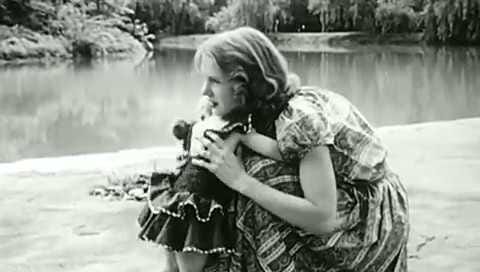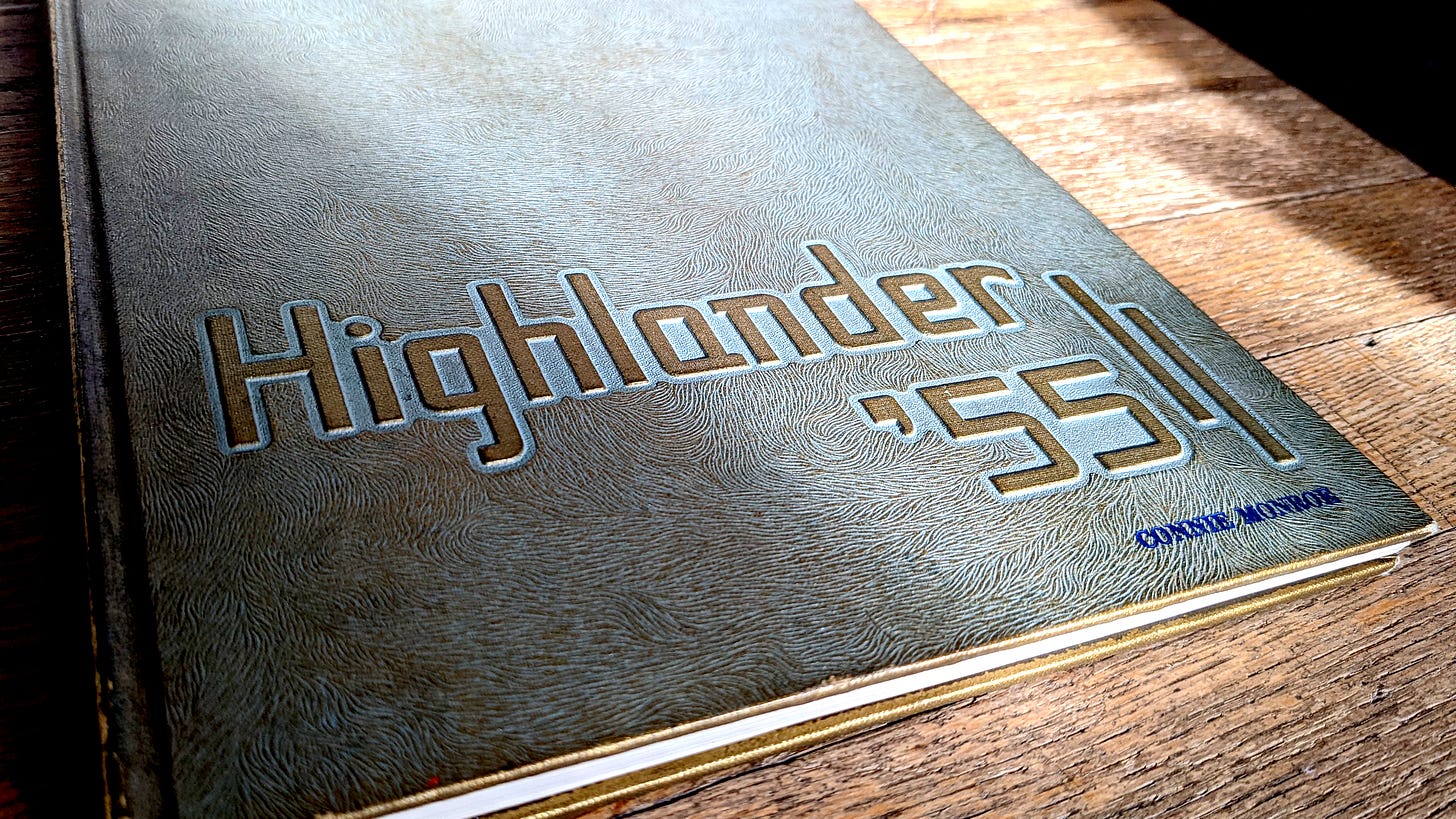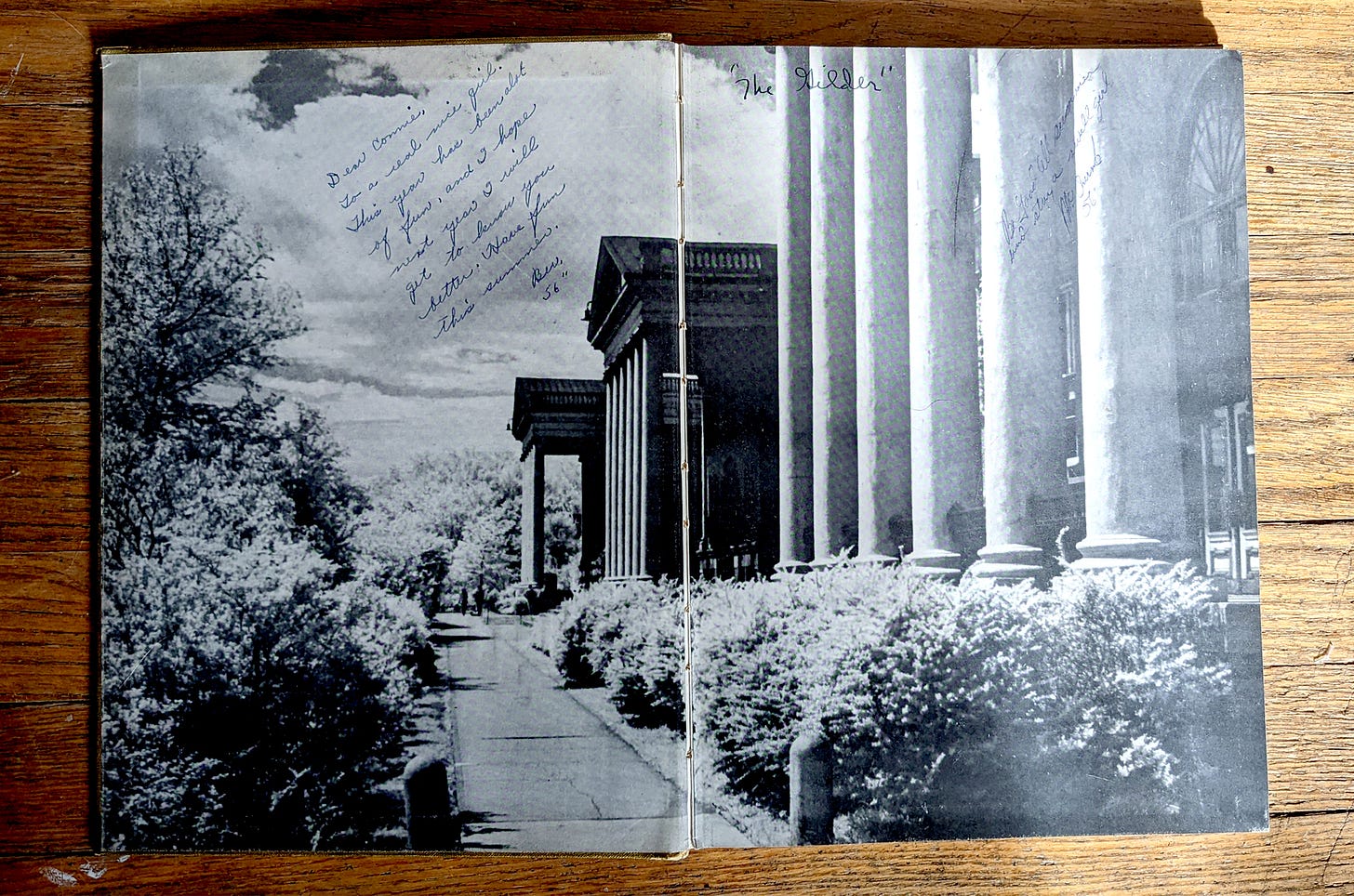Picture this: it’s 2 am, pitch black in the kitchen of the ancient apartment you and your seven roommates share. For the third night in a row, your face is illuminated in blue and white by your computer screen — you’re down yet another YouTube rabbit hole. This time, it’s old educational videos, grainy films with warbly background music posted on channels with names like Old TV Time and glamourdaze. Every problem has an easy solution, stated matter-of-factly by some male narrator with a Transatlantic accent. No need to worry or fret, or to make any decisions at all — every social situation can be boiled down to a simple formula, every negative emotion combated with a magical combination of willpower and rational thinking.
You know that darkness lurked under the shiny veneer of midcentury America: nuclear war was an ever-present threat, housewives took happy pills to dull the punishing monotony of domestic life, and white flight devastated cities like the one you’re spending the summer in. But there’s still that little voice in the back of your head, small and scared and tired of thinking for yourself, that whispers, “Wouldn’t it be easier if you just followed the rules?”
The 1950s were a decade defined by conformity; or, at least, it aspired to be. After years spent on factory lines, women were told to forget their freedom and stay home; after years spent in the trenches, men were told to forget their trauma and pursue a trade. Everything would be fine now. And everyone would play the part he or she was assigned.
But can you really reign in the chaotic wiles of teenagers, especially ones who grew up surrounded by war and change? Can you tell them to sit down, stay quiet, and dream of being insurance salesmen and secretaries-turned-stay-at-home-moms? If you asked “text-film” creators like Young America Films and McGraw-Hill, they’d probably say that, with enough instruction and reasoning, yes — these adolescents would be molded into upstanding citizens happy to make up the machinery of American society, with each boy and girl contributing in his or her own way.
If you asked the students at State High School in Kalamazoo, MI, you might get the same answer, albeit through tightly gritted teeth.
In many ways, the high school social structure we remember functions like a microcosm of the world adults move through, with societal norms distilled down to their purest essence. This was likely especially true for State High in 1955 — originally founded as an incubator for teachers-in-training and new grads of the Kalamazoo Normal School (now Western Michigan University), State High began as a highly controlled, highly standardized institution. (While no longer operating, State High’s rich history — and every edition of its Highlander yearbooks — can be accessed online. I’d love to do a deeper dive!)
And, in 1955, gender was nothing if not standardized: girls wore skirts and long ringlets and demure glances; boys had short hair and letterman jackets and loud, carrying laughs. In “the real world,” the limits of these roles could be tested — and were, most notably, by working-class women, queer folks, and people of color — but in the peer-regulated panopticon of high school, a toe out of line could spell a slow and painful social death.
The strict gender binary wasn’t always easy to follow — girls could be too flirty and opinionated and strong, boys too coy and pretty and caring. Even a good-looking, popular, well-spoken girl like Connie Monroe needs to be reminded to stay in line. Everybody likes Connie; at least, that’s the sense you get from reading her fifty-six yearbook inscriptions (yes, I counted). She’s a hall monitor, a member of the prom decorating committee, and was almost elected class secretary; yet she also knows when to act like a damsel in distress during chem lab. With her “long black curly tresses” and her mischievous glances, it sounds like she’s performing womanhood just right.
Still, the same light-hearted warnings pop up again and again.
“Be good this summer,” writes Bruce. And Janet. And Mary Jane. “Have fun” and “Take it easy” are always coupled with “Be good,” implying that there’s a possibility Connie could take it too easy, have too much fun — with boys, at least. “Don’t keep too many boys jumping,” “take it easy on the fellers,” and “take it cool with the boys this summer” pepper their way through her yearbook’s endpapers.
It’s easy to brush comments like these off as just some gentle ribbing from peers. Indeed, Connie’s yearbook is littered with sarcasm. “You’ve been a living doll this year, haven’t you?” teases Vicki. “So good in English, so quiet in history — never changed seats…” And Dean, despite being Connie’s prom date, gives her a proper talking-to: “How has any horrible fool like you ever managed to become a member of the wonderful junior class” and “It’s hard to express my hate for you in words I can write in this book.” (He makes up for it by sealing his note with a kiss, XXXX.)
But warnings about being good, however lighthearted, contain something sharp underneath. To be a good girl, Connie must walk a fine line — be studious, but don’t be smarter than your male peers. Be a leader on the prom decorating committee, but a follower when going steady. Have an active social life, but not an active sex life. Be interested in boys, but manage how interested they are in you. Have fun, but not so much fun that people start to talk. Take it easy, but be good.
I’ll have more on Connie — and her yearbook — coming atcha soon, so keep an eye on your inbox!
These past couple of months have been, if nothing else, an exercise in re-evaluating priorities. I began H.A.G.S. as a summer project, something I could sink my creative energy into after work and at the beach. But I’ve realized — after a considerable hiatus (sorry) — that I have so many more yearbooks to explore and so much more to say. So I think I’ll be sticking around.
Thanks so much to everyone who’s been along for the ride so far, from longtime readers to recent subscribers. In 2022, I’m committing to a whole year of weird and wacky yearbook content, and I hope you’ll join me. Here’s to new beginnings!







Felt this social pressure to conform even in the 60s and 70s. Remember attending "charm school" (at Wanamaker's department store). Good insights into those times.
being a 1951 HS graduate, I am living proof of your accurate assessment of that time era. You nailed it!!! BUT....look how times have changed and where we are today. Is one era better than the other??? Isn't life an exercise of change, growth, learning and adaptability? The secret: stay flexibile throughout; don't get stuck for too long anywhere along the progression. Enjoy the ride...respect yesterday's woes and joys, anxiously look forward to tomorrow's adventures. Love, love, love your insights!!! Nana